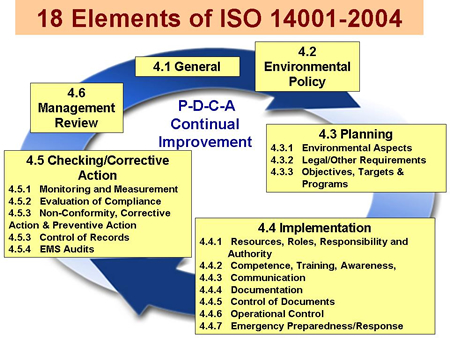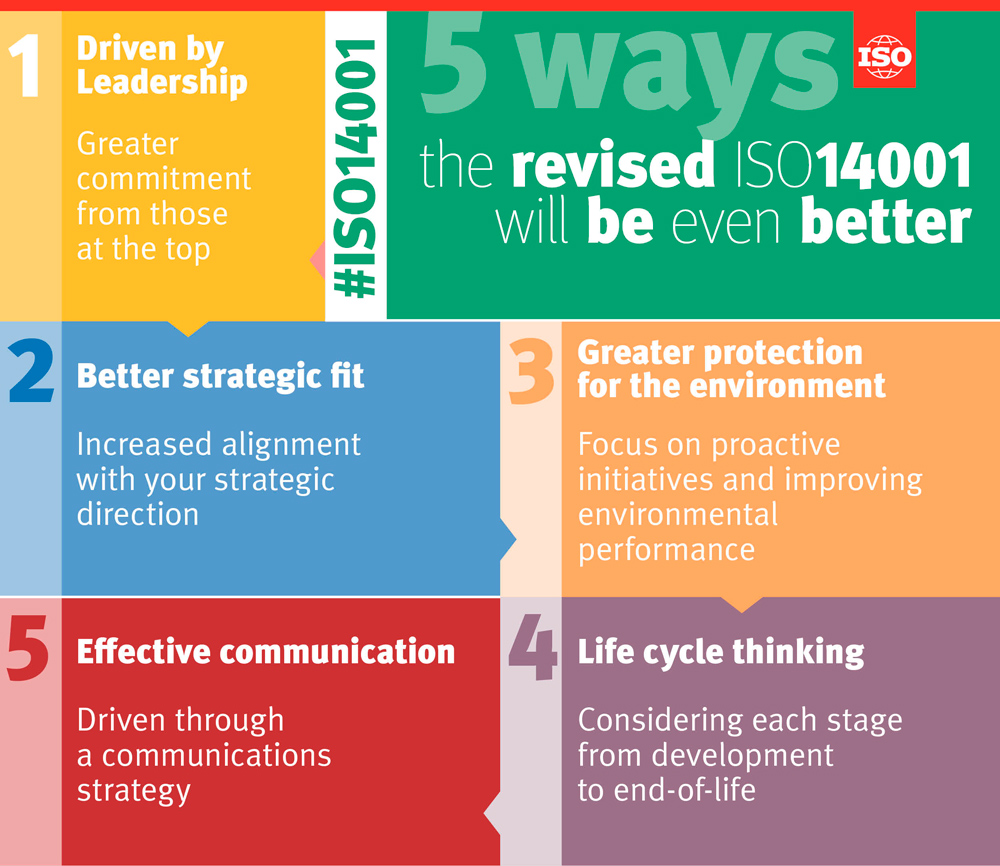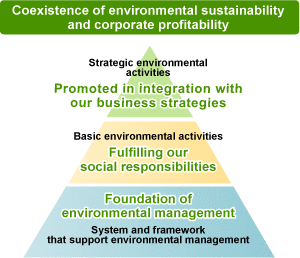As with occupational safety and health, environmental management is a relatively new aspect of corporate management. It was not until recently that the world realized that natural resources are being depleted and many of them would soon become scarce and that pollution is doing irreversible damage to the environment and as a consequence to public health and well being. Since this realization, environmental management has become a popular science and its requirements have been incorporated into the management of businesses (ISO 14001 standardizes Environmental Management Systems).

> How exactly can a business affect the environment?
> To answer this, one must carry out an Environmental Impact Assessment. This assessment requires that all environmental aspects of the business, as well as their associated impacts, are identified. These fall into the the following main categories:Utilization (and therefore depletion) of natural resources in the form of raw materials (like water and tree products);
- Utilization (and therefore depletion) of natural resources in the form of energy (i.e. fossil fuels);
- Emissions (and therefore pollution) to the air, water (underground reservoirs, rivers, lakes, seas and oceans) and soil;
- Creation of waste (and therefore pollution), including toxic and electrical/ electronic waste;
- Noise and optical pollution;
- Interference (and therefore destruction) with flora and fauna;
- Interference with land features (and related impacts such as destabilization, landslides etc.).
Some aspects are obvious, like the production and release of sewage and the use of paper, while others are less obvious because their environmental impact is indirect. These may be the organization’s CO2 and water footprints, the sustainability policies of their suppliers and subcontractors and the design (and production) of products.
Products can be designed so that they are: manufactured with a range of raw materials, through alternative processes, using more or less energy during production or while in use. They may have long or short useful lives and they may be environmentally safe or dangerous to dispose of. These are design attributes that can have an enormous environmental impact since they are not confined to the operation of a single site but rather to the effect of a product that may be traded and used all over the world.
Qualitative or quantitative models are employed to make prioritization possible. Again the assessment model is of secondary importance, while consistency in its application is a must. A number of environmental aspects are regulated by national, EU or even international legislation and therefore applicable legal requirements need to be identified. Measurements and calculations are usually required in order to identify energy consumption, usage of materials, emissions, waste accumulation etc. Logbooks are extremely useful in keeping track and recording numbers. Factors such as seasonality need to be accounted for, where applicable.
When the environmental aspects and impacts are prioritized an Environmental Program is created and populated with measures, resources and time frames for implementation. Numerical targets are set for as many items on the list as possible. For example, it may be targeted that energy consumption will be reduced by 5% within a year’s time and a set of measures is identified to achieve this. Another target may be that within a five year period, 50% of the organization’s energy will come from renewable resources.
The new ISO 14001 - 2015

Close monitoring and early corrective measures as well as training and awareness raising of staff, will help achieve continuous improvement.
Often, environmental management entails some initial investment and therefore managers with a short sight in business are reluctant to proceed. However, in the long run, it is guaranteed to have a positive effect on the company’s finances. To use the previous example of renewable energy resources: the use of solar energy requires an initial investment to be made, but in the long run, solar energy is abundant and free!
Another reason why businesses should proceed with environmental management practices is that legal requirements are becoming increasingly complex and demanding and penalties will definitely keep increasing. Unless a business has a mechanism to identify and study new applicable legislation and ensure compliance, there is a possibility that legal action is taken against it, at some point in time.
Finally, a strong motivator for organizations to adopt sound environmental practices is pressure from its stakeholders: customers, society, financial institutions (such as the World Bank) and strategic partners, all calling for sustainable development.

Environmental management is one more facet of corporate management and as such, it needs to be embedded in the corporate culture and line of management, at all levels.
Ultimately, when environmental management is embedded in the corporate mission and vision, it does enhance the organisation’s capability to create and deliver value and hence be profitably sustainable.
5.2.2016


